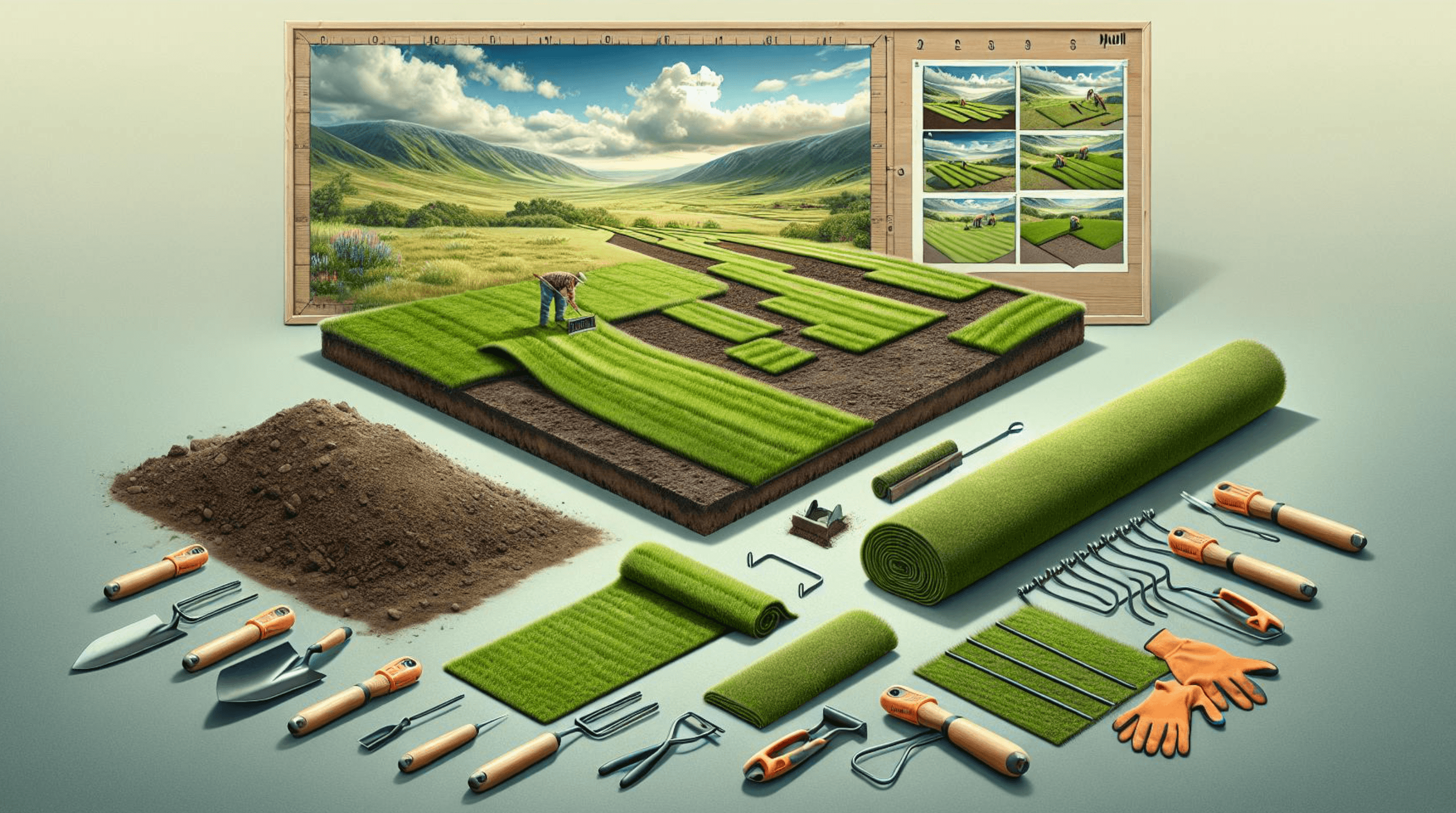Key Takeaways
Always choose the right tools for sod laying based on the specific needs of your project.
You likely don't need all the tools. We'll let you know when to use versus when you can skip.
Remember, you can always rent! Don't go buy everything you see here :)
Picking the right tools is a game-changer. It's all about working smarter, not harder. Sod laying isn't rocket science, but you'll need more than just your hands. Here's the deal: start with the basics.
Preparation Tools
Measuring Tape
Precisely calculates the area, ensuring you buy the correct amount of sod, avoiding both shortages and excess. Or you could just use our handy sod calculator instead!
When to Skip: If you're confident in your ability to estimate the area visually or if you're only patching small, easily estimable areas. Let's be honest, you're gonna need this!
Garden Rake
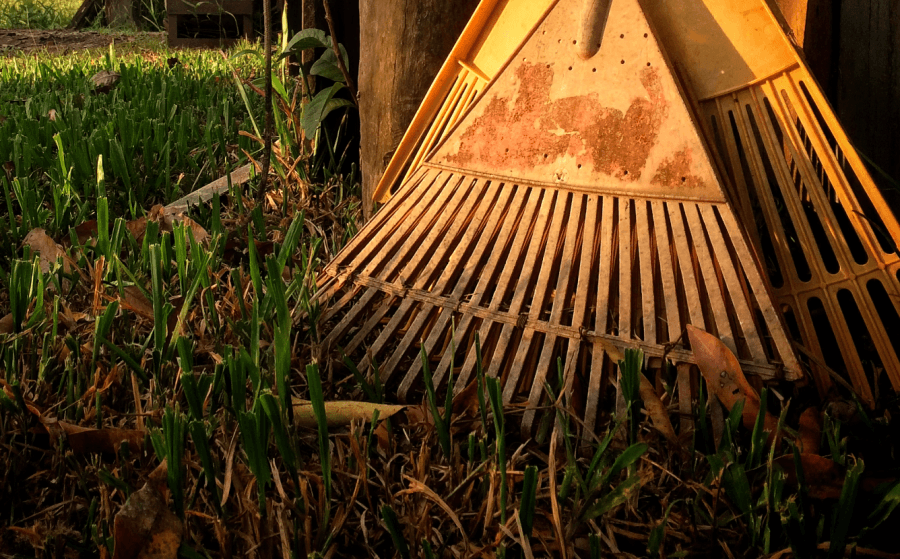
Essential for removing debris and leveling the soil, creating an even base for the sod.
When to Skip: If the soil is already level and free of debris, or if you're using a professional landscaping service that brings their own equipment.
Soil Analysis Kit
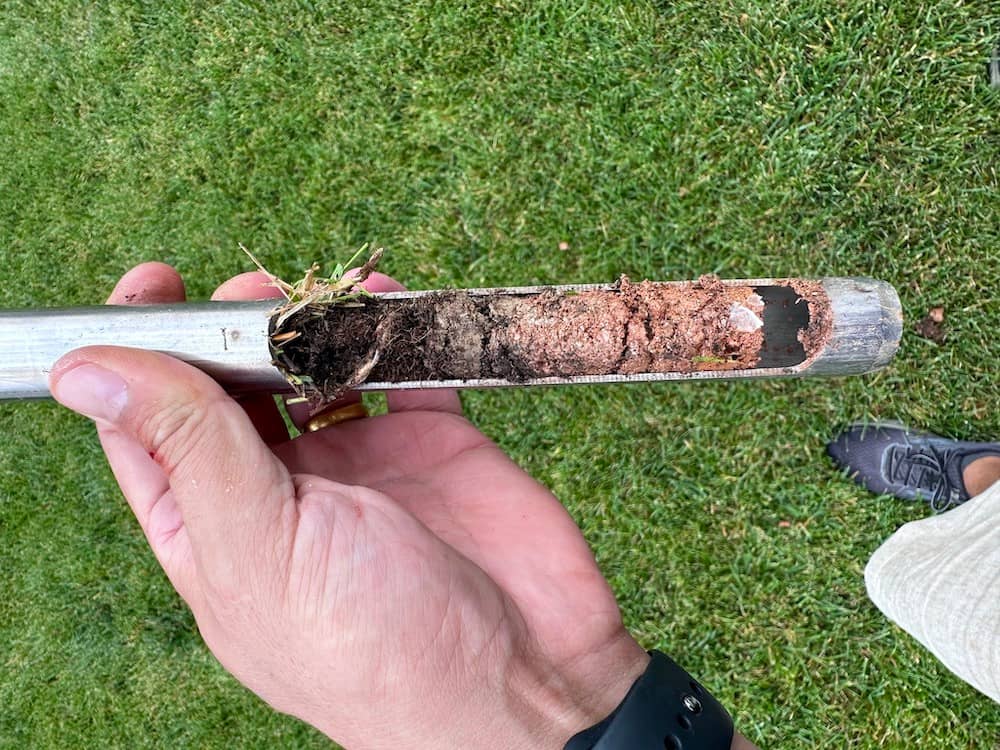
A soil analysis kit reveals the soil's nutrient profile and pH balance.
This information is crucial because it determines how well your sod will take root and grow. If the soil's pH is unbalanced, it can hinder nutrient absorption, making fertilizers less effective. Knowing your soil's needs allows you to tailor your soil preparation and fertilization, ensuring your new lawn has everything it needs to thrive.
Level Up Your Lawn Skills
Once per week we'll send you an interview from someone who has mastered the art of lawn care.
When to Use It
It's best used before installing new sod or when revamping your lawn. Testing before you lay sod helps tailor your soil preparation efforts.
It's also helpful to use if you've noticed problems with your existing lawn, like poor growth or discoloration, as it can indicate underlying soil issues.
When to skip
If you've recently tested your soil or if your lawn has been consistently healthy, you might not need a new test. Also, for small patches or repairs, a full analysis might not be necessary.
Non-Selective Herbicide
Before we lay our new sod, it's crucial to clear the area of all existing vegetation. That's where non-selective herbicides come in handy. These chemicals don't discriminate; they kill almost every plant they touch.
We use these herbicides to eliminate weeds, grasses, and other unwanted plants. When applying, it's key to wear protective gear. Gloves, long sleeves, and eye protection keep us safe.
Here’s what we do:
Choose a calm, dry day for application to prevent drift to other plants.
Follow the manufacturer's instructions closely for mixing and use.
Wait the recommended time before laying sod. This ensures the herbicide has done its job thoroughly and won't affect the sod growth.
Rotary Tiller
Loosens and aerates compact soil, promoting better root growth and drainage.
When to Skip: Not necessary if the soil is already loose and well-aerated or if you're laying sod on a small area where manual loosening of moist soil is feasible.
Lawn Roller
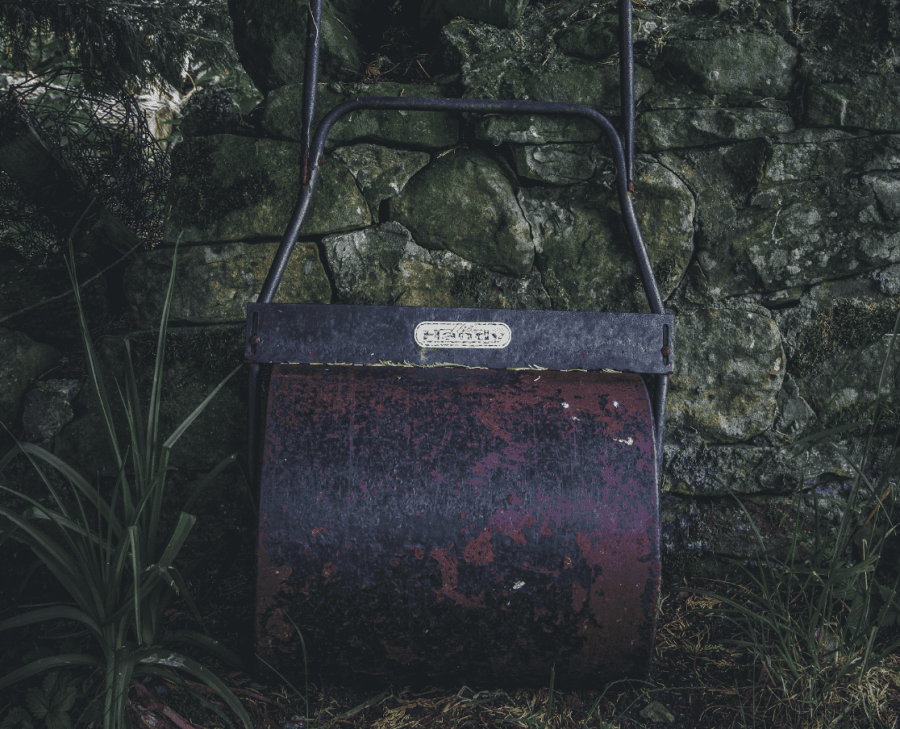
When we lay sod, we need a lawn roller. It's key for flattening the ground. Before laying new sod, we use the roller to smooth the soil. It ensures the fresh sod has contact with the soil.
Fill the roller with water or sand to add weight. The added weight helps to press the sod. After laying the sod, we roll the yard again. This removes air pockets and helps the roots settle.
Why use a lawn roller?
Evens the surface: Gives us a flat lawn.
Root contact: Helps sod roots touch the soil.
Removes air gaps: Ensures a healthier lawn.
We make sure the roller isn't too heavy. A heavy roller might compact the soil too much. Soil that's too compact can hurt our lawn's growth.
When to Skip: If the soil surface is already evenly compacted and free of large air pockets.
Sod Cutter
A sod cutter is often useful if we need to remove an old lawn. It's how we remove old grass and create a clean slate for new turf. This tool comes in different types: manual and powered. We typically choose the type based on the size of our project.
Manual sod cutters are great for small areas (less than 2k square feet). They're eco-friendly and give us a good workout! The powered versions are perfect for larger lawns. T
We operate the cutter by pushing it across the lawn. The sharp blade slices under the sod. It cuts the grass at the roots and the soil just below.
Here's what we look for in a sod cutter:
Sharp blades: They make the cut smooth.
Adjustable depth: We can set how deep it cuts.
Ease of use: It should be simple to push or operate.
Durability:The cutter must last through many jobs.
Reason to Skip: Not needed if you're laying sod over a new area without existing grass.
Sod Laying Tools
Wheelbarrow
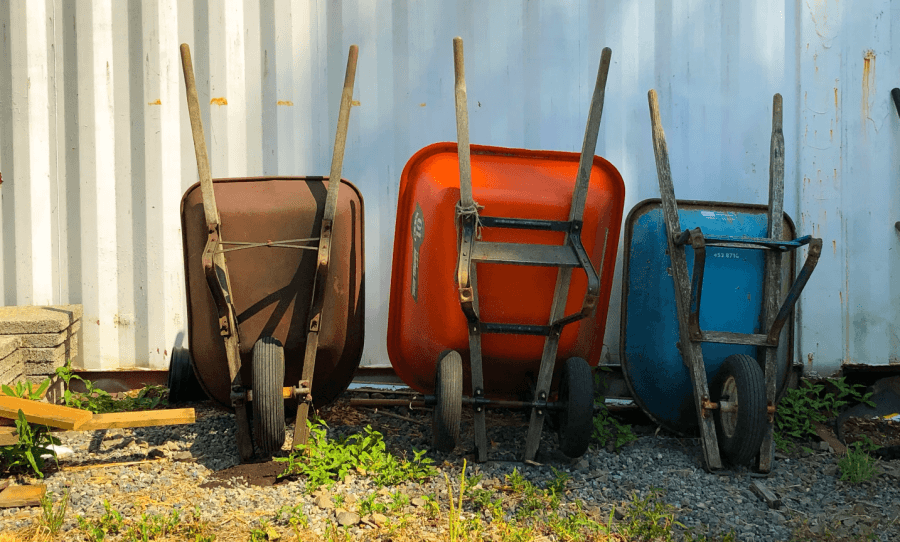
When we lay sod, a wheelbarrow is our best friend. It helps us carry heavy rolls of sod and tools with ease. We find it handy for moving soil and compost as well.
A single, sturdy wheel is great for maneuverability, but two wheels offer more stability.
Using a wheelbarrow saves us energy. It prevents strain on our backs. Remember, when loading the wheelbarrow, we distribute the weight evenly. This makes it easier to push. We take care not to overload it. That way, we avoid tipping over and spilling our load. Wheelbarrows make our sod-laying job much smoother.
Reason to Skip: If you have a small area or you can carry the sod and materials by hand. Not recommended!
Utility Knife or Sod Cutter
Allows for accurate trimming of the various sod pieces to fit around corners, edges, and obstacles, ensuring a neat installation.
When to Skip: If your sod installation process doesn't require precise trimming, like in large, open areas with few obstacles.
Post-Installation Tools
Garden Hose or Sprinkler System
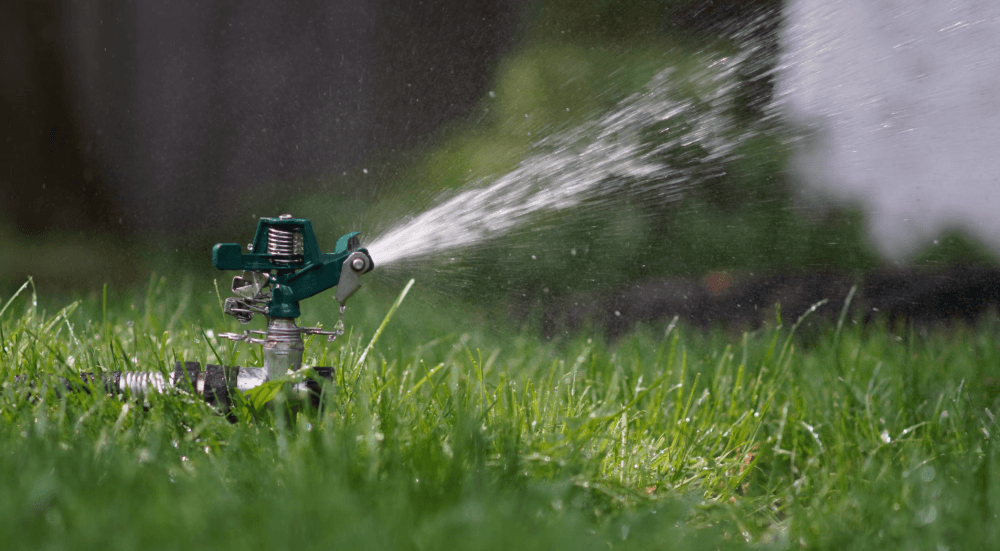
When we lay sod, watering is key. We need a good garden hose and a sprinkler. The hose lets us get water to our new lawn. It should be long enough to reach all corners.
Types of Hoses:
Standard: It's flexible and easy to move.
Soaker: Great for deep watering.
Our sprinkler needs to cover wide areas. We look for one with adjustable patterns. This ensures even watering. No dry spots on our new lawn!
Sprinkler Features:
Adjustable Range: Tailors the water flow.
Different Patterns: Matches lawn shapes.
We also make sure the connections are leak-free. A tight seal helps us avoid water waste. Happy sod laying!
Reason to Skip: If there's consistent, adequate natural rainfall or if you have an existing irrigation system.
Lawn Edger
When we're laying sod, it's important to have clean edges. That's when a lawn edger comes in handy. With a lawn edger, we can create neat lines along sidewalks, driveways, and garden beds.
There are different types of edgers. Some are manual, while others are powered by electricity or gas. We'll consider the kind of edger based on our project size.
Manual Edgers:
Best for small areas
Require physical effort
Great for precision work
Powered Edgers:
Ideal for larger lawns
Save time and energy
Come in electric or gas models
A good lawn edger should have sturdy construction. It should feel comfortable in our hands. Safety features are crucial. They protect us while we work.
Maintenance is also important. We keep our edger sharp and clean for the best results. If we take care of it, our edger will last for many seasons.
When to Skip: If you're not concerned about having perfectly defined edges or if natural borders already exist.
Fertilizer Spreader
When we lay sod, we want the grass to grow thick and healthy. That's why we use a fertilizer spreader. It helps us distribute fertilizer evenly. Even distribution is key to a lush lawn, healthy lawn.
There are several types of spreaders. Broadcast spreaders toss the fertilizer over a wide area. Drop spreaders release fertilizer directly below. Choose the one that fits our yard size.
Here are a few tips for using a fertilizer spreader:
Always check the settings. The manual guides us on the correct amount to disperse.
Fill the spreader on a hard surface. This avoids spilling fertilizer on our lawn accidentally.
Clean the spreader after each use. It ensures it works well the next time.
When to Skip: If the soil is already rich in nutrients or if you prefer to fertilize after laying the sod.
This article was originally published on January 25, 2024
Level Up Your Lawn Skills
Once per week we'll send you an interview from someone who has mastered the art of lawn care.
